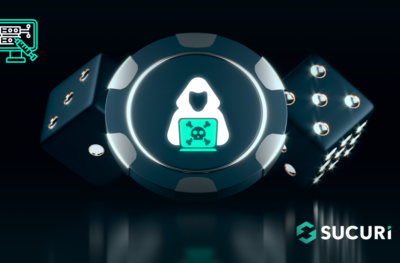Published on 03/26/2021 – Last Updated on 03/26/2021 by OTC
Posted by Cyrus-Shepard
Is a high bounce rate bad? The answer is: it depends, but yes, sometimes it can be. Is a high bounce rate bad for SEO? That’s where it gets a little more complicated. In this week’s episode of Whiteboard Friday, Cyrus gives you seven easy SEO tips to address your bounce rate, and increase engagement and satisfaction to make your users happier.
Click on the whiteboard image above to open a high resolution version in a new tab!
Video Transcription
Welcome, Moz fans, to a new edition of Whiteboard Friday. My name is Cyrus Shepard. Today we’re talking about bounce rate, specifically seven dead simple tips to reduce your bounce rate.
So most of you already know what bounce rate is. But for those who are uninitiated, bounce rate is an analytics term. It simply means a single page or non-interaction visit. When a visitor comes from Google or another website and they visit one page, they have no interaction, and they leave, that’s considered a bounce. That is a high bounce rate.
So is bounce rate bad? That’s a common question. The answer is, yeah, it can be bad. For example, if everybody is coming to your homepage and you want to get them to your sales page or your checkout page, you don’t want a high bounce rate. In that situation, yes, bounce rate is definitely bad. But is bounce rate bad for SEO? Well, there it gets a little more complicated.
Now, to be clear, Google does not use bounce rate. It is not a ranking signal for Google. That said, we do know that there’s a lot of evidence that Google does use some sort of engagement signals for SEO that we don’t have access to. So in that way you can think of bounce rate as a proxy signal for engagement and satisfaction, and that’s really what we’re trying to measure here. We’re trying to measure how satisfied our uses are, how engaged they are with a page. In some instances, there is evidence that this could help your SEO in some circumstances.
Now just lowering your bounce rate is not going to automatically improve your Google rankings. It doesn’t work that way. But lowering your bounce rate can have positive effects. In fact, your visitors may be more satisfied.
Now to be clear, before we get into these tips, I want to be very clear the goal is not to reduce your bounce rate number. It’s just a number. It doesn’t mean anything. The goal is to increase engagement and to increase satisfaction, to make your users happier. Just reducing your bounce rate, that doesn’t do anything. But if you make your users happier, give them what they’re searching for, that’s what we’re trying to do, and we’re using bounce rate as a proxy to measure that along with other metrics, such as time on site, the number of pages visited, and things like that.
1. Page speed
So we’re looking to make users happier. So how do we do this? How are we going to lower our bounce rate? Well, seven quick tips, very basic stuff in SEO. First of all, page speed. It’s not very sexy, but I included it here because out of all of these tips improving your page speed is probably the number one way to guarantee a reduced bounce rate.
I’ve seen it on hundreds of sites. Make your site faster, bounce rate goes down. Why? Well, for one, more people can simply access your content. They’re not waiting for it to load. They’re in the subway, on their cell phone, it loads faster. Second, it’s just a better experience than if they’re waiting for images to appear and things like that.
It will almost definitely guarantee to lower your bounce rate. This is the number one reason that, in my opinion, you work to improve the speed on your website. Yes, speed is a Google ranking factor. It is a confirmed Google ranking factor. In most cases, though, it’s a pretty small one.
But if you improve engagement and satisfaction with your speed, that has downstream effects that have much broader, wider SEO implications. It’s the number one reason to improve speed, not for the ranking benefit, but for this reason alone. Yes, this includes the upcoming Core Web Vitals that are coming out, that are going to be a ranking factor soon. We’ll link to some resources on how to improve that:
2. Broaden intent satisfaction
So one, nail your speed. Two, the easiest way to lower bounce rate is two broaden your intent satisfaction. Now what do we mean by this? Are we satisfying the intent that people came to your site for in the first place?
For example, someone searches for “Nike shoes.” Well, we want to rank for “Nike shoes,” but we don’t really know what the intent is of the person who searched. Do they want to buy Nike shoes? Do they want reviews of different Nike shoes? Are they looking for pictures of Nike shoes? It could be any one of those things. The more broadly we can satisfy that intent on the page or link to other resources, the better we’re going to do with engagement and our bounce rate.
Deep competitive analysis
So how do we do this? So one, you want to do deep competitive analysis. You want to see what’s already ranking for these terms, for your ideal search term and look at all of the ranking results and what’s working and try to satisfy those intents. If you’re not offering the same type of content as the top 10 ranking results, you’re probably not matching that intent very well.
Answer questions
So you might want to rejigger your content. The second thing you should be doing is answer questions more deeply. Now we talk about long-form content typically performing better in search results. Long-form content isn’t a ranking factor. But the more complete you can answer questions, that usually has a better impact. So simply answering questions better can deepen the intent satisfaction.
Link to related content
Finally, and this is my number one trick/tip, link to related intent. An example is on Moz we have literally dozens of articles that we’ve written about various SEO topics, such as canonical tag. Each has a slightly different intent. When someone lands on any of those pages about a canonical tag, we can link to all the other resources about canonical tags in a prominent position.
Now you often see related articles that are like little widgets at the end of articles. I generally like to place those much higher in the content, where people can see them and engage and click on those articles because we may not have captured the intent perfectly on this page, but we can link to all those related resources and capture the intent that way.
As soon as they click and go explore the other page, they’re getting their intent satisfied, and we have lowered our bounce rate. So find those related articles on your site and link to them prominently. You’re going to do well.
3. Smart CTAs
Number three, smart CTAs. Oftentimes that’s what you’re trying to get people to do. You’re trying to get them to click your CTA to go buy your product or check out your download or whatever it is.
The smartest way to improve your CTAs is include the ranking keyword in the CTA itself. So this means go to Google Search Console, go to Moz Keyword Explorer, find what your pages are actually ranking for, and take those top keywords and insert them into the CTA itself. For example, if my page is about credit reports or getting a credit report score, I could have a CTA that says “Add to Cart,” or I could have a CTA that says, “Get my credit report.”
This is psychologically 100 times more powerful than saying “Add to Cart” because I just typed “credit report” into Google, and aha, here it is. I want to get my credit report. So including your keywords in the CTAs is a very smart way and simple way of improving engagement and lowering your bounce rate.
4. Use inverted pyramid writing
Number four, I got this from Dr. Pete Meyers. Thank you, sir. Use the inverted pyramid style of writing. So we want to engage people in our writing, when they come looking for answers, and that means we want to hook them early and draw them into your content. The inverted pyramid style of writing, borrowed from journalism and I’m going to link to Dr. Pete’s post on this, is start with a lead. Start with a quick answer, go into the details and then your content. So you want to grab them. Show them what you’re going to promise them and pull them into the details. That’s all about creating more engaging content, drawing people in, and having good, clean content that looks great and works all well.
5. Make site search simple
Moving on, make site search simple and obvious. Here’s why. If you can provide an easier search solution than Google, that gives the user a reason to search your site instead of going back to Google, which counts as a bounce. If they search on your site, you have engaged them. They’re looking at more content on your site, and you’ve reduced your bounce rate and improved engagement.
So I like making site search very obvious, very simple. Especially if you’re a resource heavy site and people think that they can find what they want on your site, it’s going to improve it. Don’t make them search Google. Let them search your site instead.
6. Add media
Adding video, images, and different media. Some of our highest engagement pages here at Moz are these Whiteboard Fridays.
Why? They have a video. One thing I would suggest though, something we’ve learned over and over again, is mix your formats. The average person watching one of these videos stays on the page and the site for 9 or 10 minutes, which is huge for us. But one thing we did several years ago is we started adding transcripts and images to these posts.
So mixing the media usually does much better than just adding a video or images by itself. So pages with images, video, and text generally do better than pages with just those things by themselves.
7. Reduce rage and dead clicks
Finally, something I’ve been getting into recently is reducing what’s known as rage clicks and dead clicks.
Rage clicks are when people are hitting something that they think is supposed to be a button or a link and it doesn’t work. Same with dead clicks. They’re hitting something, an element on your site, maybe it’s an image, maybe it’s a special color text that they think is supposed to be a link or they think is supposed to be a call to action, and it doesn’t work. Maybe JavaScript is not loading correctly or something like that.
Or maybe an image looks like a button. Every site has these. You can generally find these with heat tracking software. Microsoft just came out with a new product that’s free — Microsoft Clarity. There’s Hotjar. Any sort of heat tracking or heat mapping software can generally show you these rage clicks and dead clicks.
If you fix these, people are going to click the elements that are actually workable, and it will give you insight on how to reduce these. These are definitely going to reduce your bounce rate. All right. So if you have any tips on reducing your bounce rate, please leave them in the comments below. If you like this video, please share. Let your friends know about it.
Thanks, everybody. Bye-bye.
Video transcription by Speechpad.com
Sign up for The Moz Top 10, a semimonthly mailer updating you on the top ten hottest pieces of SEO news, tips, and rad links uncovered by the Moz team. Think of it as your exclusive digest of stuff you don’t have time to hunt down but want to read!
![]()












Comments